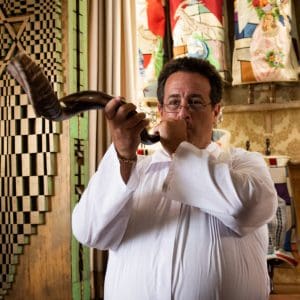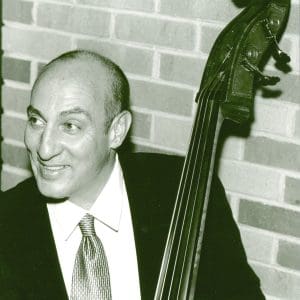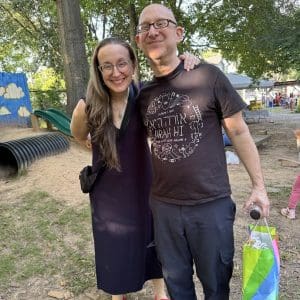VA-ETCHANAN – SHABBAT NACHAMU* 5778
DOING WHAT IS RIGHT AND GOOD IN GOD'S EYES
July 26, 2018
14 Av 5778
Be sure to keep the Commandments, decrees and laws that the Lord your God has commanded you [Deuteronomy 6:17].
Do what is right and good in the eyes of the Lord… [ibid v. 18]
The command in verse 16 is clear: perform all the mitzvot enumerated in the Torah. The Traditional commentators taught that the superfluous command in v. 18, "do what is right and good in the eyes of the Lord," is a challenge to extend ourselves to do more than what is specifically enumerated in the Torah. This concept of enlarging the scope of justice recognizes that human interaction is far too complex to be encompassed by any corpus of law, regardless of its goal to be as specific as possible.
It's a challenge to overcome the human propensity to take advantage of another's mistakes or negligence. The Talmud records that Rabbi Shimon ben Shetach (120-40 BCE) dispatched his students to purchase, on his behalf, a donkey (complete with saddle) from a Gentile merchant. The students dutifully returned with the animal, and Rabbi Shimon, upon examining the saddle, discovered a valuable diamond embedded within it.
The students rejoiced on Rabbi Shimon's good fortune; the merchant had clearly sold the donkey plus the saddle as they were, thereby including the jewel. The Rabbi, however, insisted that the diamond be returned; he refused to take advantage of the merchant's negligence or ignorance. The merchant obviously had no legal claim; he had inadvertently included the diamond in the sale that, by custom, was final. By refusing to stand on his legal right, Rabbi Shimon acted beyond the demands of the Law; he did what was "right and good in the eyes of God."
A commitment to this principle has been playing out for the past few weeks in our society. A large number of Central American migrants and asylum-seekers were stopped at our border with Mexico. The Administration's decision to separate children from their parents and intern them in separate venues quickly became a cause célèbre. The outpouring of criticism plus judicial decrees protested and condemned the Executive Order which, while legal, nonetheless strained the boundary of justice. Public opinion demanded that the government dare not exercise any legal advantage it possesses to the detriment of these children. Whether or not the uproar flows from a religious commitment, the reality is that these protests demanded, that as a nation, we do "what is right and just in the eyes of God." Responding to this higher demand is being a mensch (a truly upright human being).
Rabbi Israel of Rosin, a noted 19th Century sage and scholar, once asked his students how many "books " or sections comprised the definitive Code of Jewish Law. They instantly responded with four that they quickly enumerated. Rabbi Israel smiled and commented, "but there is a fifth: the guide to being a mensch. It's the code that directs us not to be limited in our actions and decisions only by what is articulated and enumerated in the four well known books or sections."
Striving to live by this fifth section is doing what is right and just in God's eyes." May we be blessed with the sensitivity – and the willingness – to strive to live up to this standard of being a true mensch.
—
From the holy city of Jerusalem, my best wishes for a Shabbat Shalom u'Mevorach, a Shabbat of peace and of blessing.
Rabbi Arnold M. Goodman
*Each of the Haftarot of the seven Shabbatot immediately following Tisha B'Av is a selection from the last chapters of the Book of Isaiah in which the prophet reassures the community that has suffered defeat at the hands of the Babylonians and was now in exile there. These selections are thus called the "hafatorot of consolation." The first begins with the words, "Nachamu nachamu ami," "Comfort ye, comfort ye My People, sayeth your God" (Isaiah 40:1).
D'VARIM SHABBAT HAZON* 5778
TWO JUDEA COINS
July 19, 2018
7 Av 5778

These two coins were minted close to two thousand years apart. The right coin from 70 C.E. commemorates the tragic destruction of the Second Temple and the enslavement of many of the war's survivors. The left coin in 1958 celebrates the survival and growth of the Jewish People in its ancestral homeland.
Rome honored major military victories with a commemorative coin. In the year 70 following Rome's quashing of the Jewish revolt, the Roman Emperor Vespasian minted his famous commemorative coin depicting a Roman centurion proudly standing before the palm tree, a symbol of Jerusalem, beneath which sat a dejected and forlorn woman symbolizing the defeated and isolated Judea. The Latin inscription Judea Capta triumphantly proclaims, Judea is captured.
In 1958 in celebration of its 10th anniversary, Israel issued its first commemorative coin. It is a proud and powerful rejoinder to the one issued by Vespasian. Here too a palm tree is at its center with a proud farmer on its right and on the left, an erect woman cradling in sheaves of newly harvested wheat, a symbol of Israel's productivity and prosperity. The Hebrew in the coin's outer edge notes the 10th anniversary of a free Israel. The Latin in the inner circle, Israel Liberata proclaiming Israel's liberation is a clear refutation of Vespasian's Judea Capta.
Which leads to the question. Is Tisha b'Av releveant in our time when we have the State of Israel and have returned to, and rebuilt, Jerusalem? There is a school of thought that the time has come to relegate the fast day to the proverbial dustbin of history.
I, however, continue to observe the Fast with its many prescribed rituals. I will recite some of the kinnot (dirges) mourning the loss of the Temple even though I do not long for the creation of a third Temple and the resumption of the sacrificial cult. I find it difficult to accept that slaughter of animals expiates sin or expresses gratitude for blessings in our lives.
Yet I choose to remember the Temple and the cult precisely because they are part of our history. The destruction of the Temple was traumatic, but the rabbinic response continues to be a reality in Jewish life. Their insistence that the Temple and its service be replaced by the synagogue with appropriate prayers and readings has kept us in touch with our history.
These two coins are appropriate bookends reminding us where we once were and summoning us to celebrate the long and often very painful journey to the independence we now enjoy.
On Tisha b'Av may we as a people symbolically but proudly grasp and contemplate Vespasian's coin. On the other days of the year, may the Tenth Anniversary coin happily jingle in our collective pockets.
From the holy city of Jerusalem I wish you a Shabbat Shalom u'Mevorach, a Shabbat of peace and of blessing.
—
Rabbi Arnold M. Goodman
*The haftara or prophetic selection on the Shabbat before Tisha b'Av is the first chapter of Isaiah that begins with the words Hazon Yeshayahu, the vision of Isaiah. Hence the designated name of Shabbat Hazon. In this chapter the prophet mourns that the faithful city (Jerusalem) once was "filled with justice and where righteousness dwelt …. the orphan and the widow's causes never reach them." This powerful chapter is a fitting segue into the annual Fast that this year begins at the conclusion of Shabbat.






























